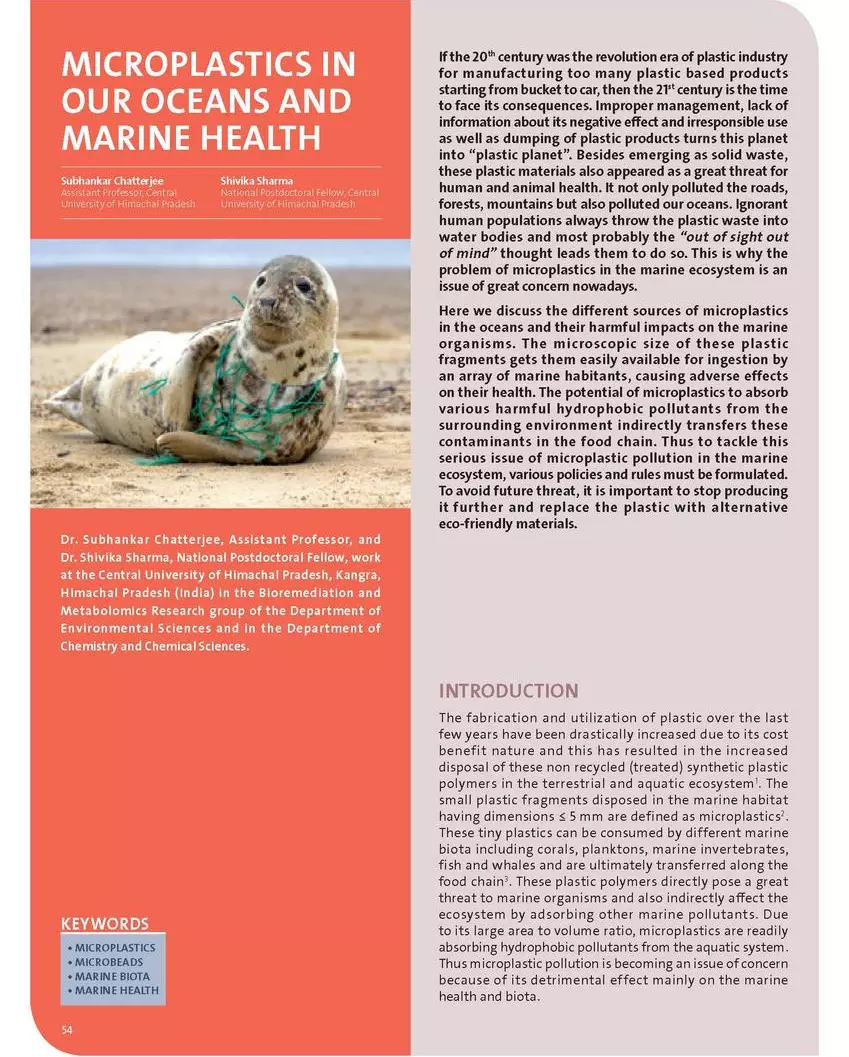By Subhankar Chatterjee, Assistant Professor, Central University of Himachal Pradesh, and Shivika Sharma, National Postdoctoral Fellow, Central University of Himachal Pradesh
If the 20th century was the revolution era of plastic industry for manufacturing too many plastic based products starting from bucket to car, then the 21st century is the time to face its consequences. Improper management, lack of information about its negative effect and irresponsible use as well as dumping of plastic products turns this planet into “plastic planet”. Besides emerging as solid waste, these plastic materials also appeared as a great threat for human and animal health. It not only polluted the roads, forests, mountains but also polluted our oceans. Ignorant human populations always throw the plastic waste into water bodies and most probably the “out of sight out of mind” thought leads them to do so. This is why the problem of microplastics in the marine ecosystem is an issue of great concern nowadays.
Here we discuss the different sources of microplastics in the oceans and their harmful impacts on the marine organisms. The microscopic size of these plastic fragments gets them easily available for ingestion by an array of marine habitants, causing adverse effects on their health. The potential of microplastics to absorb various harmful hydrophobic pollutants from the surrounding environment indirectly transfers these contaminants in the food chain. Thus to tackle this serious issue of microplastic pollution in the marine ecosystem, various policies and rules must be formulated. To avoid future threat, it is important to stop producing it further and replace the plastic with alternative eco-friendly materials.



